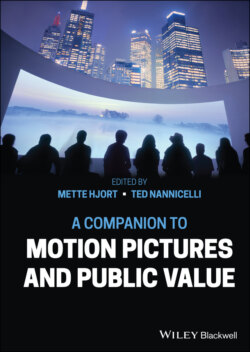Читать книгу A Companion to Motion Pictures and Public Value - Группа авторов - Страница 50
Conclusion: Film, Nature, and Public Values
ОглавлениеTo conclude, I want to consider a possible response to my discussion of film and nature aesthetics. This discussion, it may be pointed out, has been less a discussion of film in particular than a discussion of the more general phenomenon of mediated nature appreciation. This is true, but I would insist that film is of crucial importance to nature aesthetics precisely because of its potential to upend a number of general assumptions that have kept mediated appreciation off the discipline’s agenda. Simply because mediated appreciation opens up so much of the aesthetic value of the natural world that would otherwise be lost to us, no philosophical account that ignores it can be satisfactory. Since closer attention to film offers a more positive perspective on mediation than we find in the literature, the study of film promises to be a fruitful avenue for future work on the aesthetic value of nature.
Furthermore, I think we can extract an important conclusion about the particular medium of film from our discussion, for film’s potential to mediate nature appreciation is relevant, in a very direct way, to public understanding and protection of natural beauty. As the quintessentially mass medium, film has often been thought to be closely related to questions of the public good, and this is very much the case with respect to questions of environmental value. Earlier I mentioned the example of Sable Island. In 2013 it was made a national park, and opened to visitors. Today, tour boats full of tourists regularly descend to experience, directly, what Dutesco had “only” captured on film.21 We continue to demand direct contact with nature, though at what cost remains to be seen. But if the idea of mediated appreciation is cogent, then this trend deserves serious re-thinking. No doubt there are many dangers inherent in technology’s mediation of our relationships, aesthetic and otherwise, with nature. But these perils should not cause us to lose sight of technology’s potential for reshaping our relationship with nature in ways that are positive, both aesthetically and environmentally.
